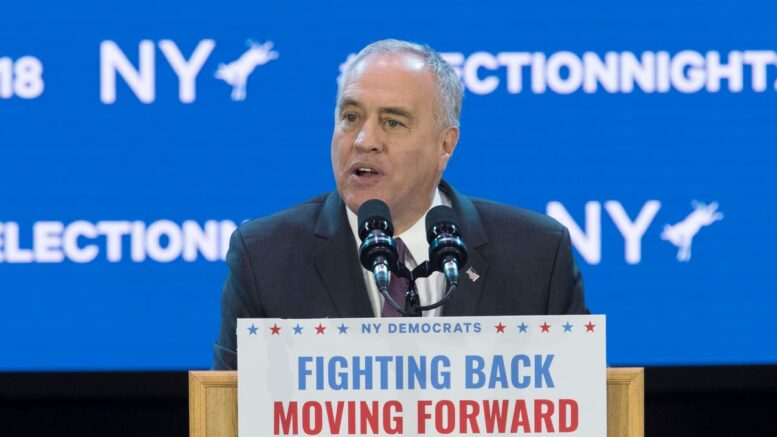Comptroller Thomas DiNapoli has announced several technical changes related to New York State’s largest public-sector retirement system. The maneuvers, he said, are expected to result in overall taxpayer savings, beginning with the 2022-23 budget cycle.
The state’s $268 billion Common Retirement Fund, where DiNapoli serves as sole trustee, will reduce its long-term assumed rate of return on investments from the current rate of 6.8% to 5.9%.
In a news release announcing the change, DiNapoli said expected statewide employer contributions, which are taxpayer funded, are expected to clock in at $4.4 billion for the 2022-23 budget cycle, which is $1.5 billion less than the current collective amount being contributed.
“The fund’s strength gives us the ability to weather volatile markets,” DiNapoli said in a statement. “Our prudent strategy for long-term, steady returns helps ensure our state’s pension fund will continue to be one of the nation’s strongest and best funded.”
The Common Retirement Fund funnels assets into two separate entities: the New York State and Local Employee Retirement System (NYSLERS) and the Police and Fire Retirement System (PFRS).
Based on estimated figures from Michael Dutcher, a retirement systems actuary, the estimated average employer contribution rate into the NYSLERS will be lowered from 16.2% to 11.6% of payroll. The average contribution rate into the PFRS is set to go from 28.3% to 27% of payroll.
The overarching mechanism that has spurred the changes is the rate of return. This is the fourth time DiNapoli has reduced the figure within the past 11 years.
In 2010, the rate was trimmed from 8% to 7.5%. Five years later, it was reduced further to 7%. In 2019, the rate settled at its current 6.8% figure.
In his actuarial report, Dutcher recommended the further 0.9% rate of return reduction, citing the Common Retirement Fund’s “stellar FY 2021 performance.”
The fund “enjoyed the best fiscal year return in its history (33.5%),” Dutcher wrote. “This provides an opportunity to recommend a significant drop in the assumed rate of return to put it in alignment with the sole trustee’s (DiNapoli) risk appetite.”
In his recent statement, DiNapoli also announced the state pension is currently 99.3% funded, which is among the best figures across the U.S.
The Empire Center, an Albany-based fiscally conservative think tank, said the changes in motion come with future unknowns. DiNapoli is undertaking a restart of actuarial asset measures, rather than the more measured approach of “smoothing” returns in the next five years.
“The restart comes with a risk,” E.J. McMahon, founder and senior fellow with the Empire Center, said in a statement. “If investment returns over the next few years average below the assumed (rate of return), as they did in the early 2000s and again in the Great Recession, employer contributions will need to be sharply increased in just a few more years.”
On the whole, however, McMahon wrote a favorable review of DiNapoli’s plans, particularly with regard to the healthy 99.3% funding figure.
“Even adjusting for lenient public-sector accounting standards, on which that estimate is based, New York State has one of the nation’s best funded public pension funds,” McMahon said.
Statewide, DiNapoli said more than 3,000 employers participate in the NYSLERS and PFRS. Within the two systems, there are more than 300 different retirement plan combinations.
This article was originally posted on Changes to New York’s state-funded retirement system should lead to taxpayer savings, DiNapoli says

Be the first to comment on "Changes to New York’s state-funded retirement system should lead to taxpayer savings, DiNapoli says"